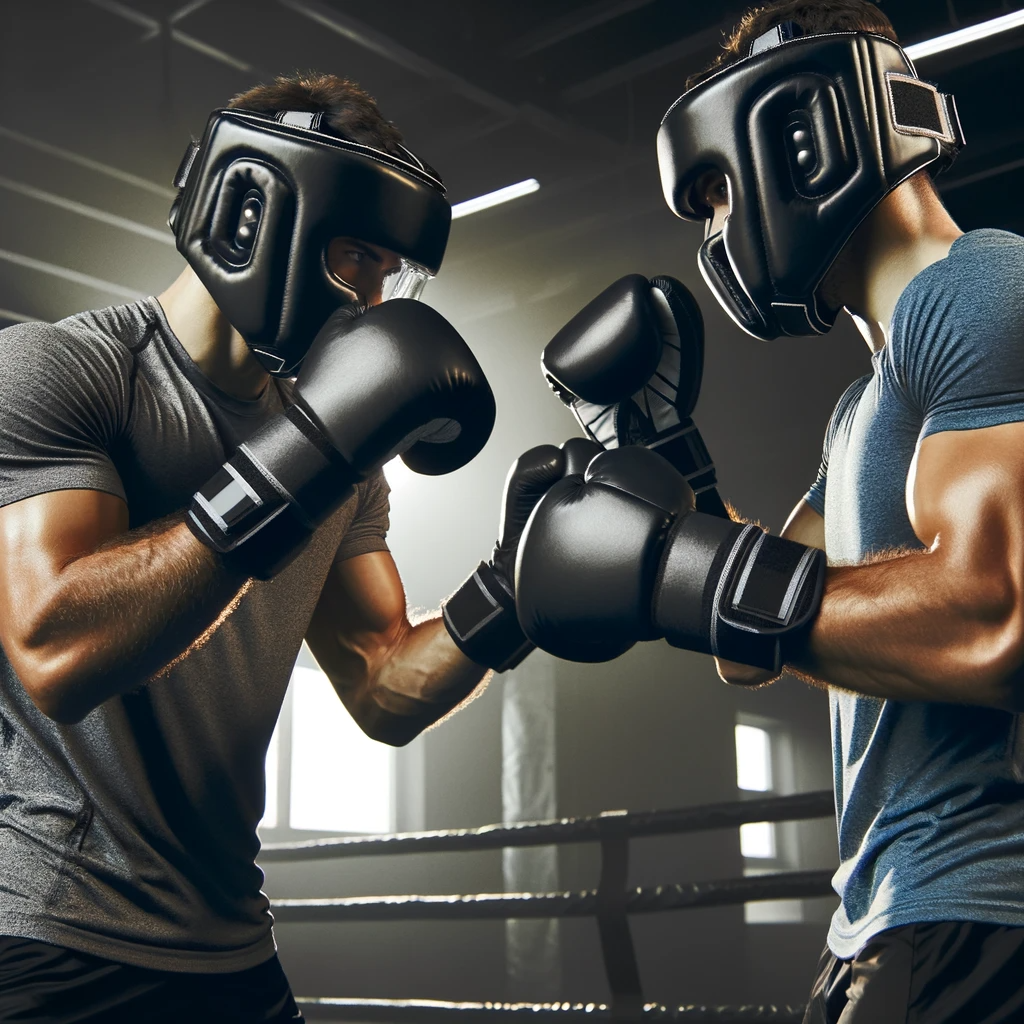Hey there, fellow fitness enthusiasts! Have you ever found yourself staring at the space in your apartment where a punching bag just can’t fit? Or maybe, like me, you’ve winced at the price tags on some of these heavy bags. Well, I’ve been there, and that’s why I’m excited to share my journey in discovering some amazing punching bag alternatives that have spiced up my martial arts and boxing training.
When Space and Budget Say ‘No’ to Punching Bags
I remember when I first moved into my tiny apartment, looking at the cramped space and thinking, ‘How on earth am I going to fit a punching bag in here?’ Not to mention, my wallet gave a little cry every time I checked out the prices of traditional bags. That’s when I decided to get creative.
Why Consider Alternatives to Punching Bags?
- Space and Cost Constraints: Not everyone has the luxury of a spacious gym or the budget for expensive equipment.
- Versatility in Training: Different training tools can target various aspects of fitness and skill.
- Enhancing Specific Skills: Some alternatives focus more on speed, agility, and precision than a standard punching bag.
Comprehensive List of 15 Punching Bag Alternatives
1. Shadow Boxing: My Living Room Champion

Shadow boxing became my go-to. I’d stand in front of my mirror, throwing punches at my reflection, imagining it was a heavyweight champion. It felt silly at first, but boy, did it work wonders on my footwork and technique! Plus, it’s a killer workout – my arms and legs can vouch for that.
- Features: Mimics fighting movements in the air without any equipment.
- Pros: Enhances technique, footwork, and speed. Requires no equipment.
- Cons: Lacks the resistance and tactile feedback of hitting a physical object.
>>Buy Shadow Boxing Weights on Amazon
2. Sparring: That Time I Convinced My Friend to Box

Sparring is a whole different ball game. I convinced my friend to put on some gloves and give it a try. We laughed, we dodged, and we learned a lot about timing and strategy. It’s one thing to punch the air; it’s another to have a buddy throw a jab at your face (gently, of course).
- Features: Practice with a partner, simulating real fight scenarios.
- Pros: Real-time feedback, improves reaction and adaptation skills.
- Cons: Risk of injury, requires a willing and skilled partner.
>>Check Out Sparring on Amazon
3. Focus Mitts: The Living Room Duel

Then, there were the focus mitts. My partner wasn’t too thrilled at first to hold them, but we turned it into a game. I’d try to hit the mitts while they moved around, turning our living room into a playful boxing ring. It was fun and boosted my accuracy like nothing else.
- Features: Padded targets held by a partner to practice strikes.
- Pros: Develops accuracy, timing, and coordination. Interactive training.
- Cons: Requires a trained partner, not a solo training tool.
>>Check Out Focus Mitts on Amazon
4. Wrist Weights: Feeling Like a Superhero

Adding wrist weights to my routine made me feel like a superhero training for the big fight. Sure, they were just small weights, but they added that extra oomph to my punches, building strength in ways I didn’t expect.
- Features: Weights worn around the wrists during training.
- Pros: Builds arm strength and endurance. Can be used with other exercises.
- Cons: Can lead to muscle fatigue or strain if overused.
>>Check out Wrist Weights on Amazon
5. Free-standing Bags: My Portable Opponent

When I finally saved up some cash, I got a free-standing bag. It wasn’t as bulky as a traditional bag and I could shove it in the closet when guests came over. Kicking and punching it was satisfying, especially after a long day at work.
- Features: A heavy bag with a stable base, no need for hanging.
- Pros: Space-efficient, movable, good for striking power.
- Cons: May lack the stability of traditional heavy bags.
>>Check out Free-standing Bags on Amazon
6. Wooden Dummies: Channeling My Inner Martial Artist

And let’s not forget the wooden dummy I crafted. It was a fun DIY project, and practicing on it made me feel like I was in a kung fu movie. It’s great for precision and practicing those block-and-strike routines.
- Features: Traditional martial arts training tool with arms and legs for practicing strikes.
- Pros: Great for precision, form practice, and blocking techniques.
- Cons: Expensive and less versatile than bags.
>>Check out wing Chun Wooden Dummies on Amazon
7. Kick Shields: My Buddy, the Human Target

Remember the friend I convinced to spar with me? Well, I also got them to hold kick shields for me. It was hilarious at first – they kept flinching every time I kicked. But it turned into an incredible workout for both of us. I improved my kick power, and they got a lesson in endurance!
- Features: Large padded shields held by a partner for kicking and striking.
- Pros: Ideal for practicing power strikes and kicks.
- Cons: Requires a partner and can be bulky to store.
>>Check out Kick Shields on Amazon
8. Improvised Surfaces: The Pillow Fight Turned Training Session

One day, lacking any proper equipment, I grabbed a couple of pillows and started a mock fight. It was nowhere near the real deal, but it was a blast and surprisingly effective for light practice. Plus, it’s a great way to recycle those old cushions!
- Features: Using pillows, cushions, or other soft items for light practice.
- Pros: Cost-effective and readily available.
- Cons: Not durable and lacks realism.
>>Check out Makiwara Training Board on Amazon
9. Spar Bars: Ducking and Weaving Like in the Movies

When I saw a spar bar for the first time, I thought it looked like something out of a sci-fi movie. Using it felt like dancing – ducking and weaving around. It’s less about brute force and more about agility and timing, which was a fun change of pace.
- Features: Rotating arms on a pole or stand to dodge and strike.
- Pros: Improves reflexes, timing, and head movement.
- Cons: Less about power, more on timing and agility.
>>Check out Spar Bars on Amazon
10. Water-filled Bags: The Surprisingly Satisfying Squish

I was skeptical about water-filled bags at first. But the first punch I threw was a revelation – it’s a different, more satisfying squish compared to traditional bags. Plus, it’s easier on the wrists, which is a godsend after a long day of typing.
- Features: Heavy bags filled with water instead of sand or fabric.
- Pros: More joint-friendly, provides a unique resistance.
- Cons: Risk of leakage, not as firm as traditional bags.
>>Check out water filled punching bags on Amazon
11. Air-filled Bags: Light as a Feather, Quick as a Bee

Then there’s the air-filled bag. It’s light and doesn’t give much resistance, but it’s perfect for working on speed. I felt like Muhammad Ali, ‘floating like a butterfly, stinging like a bee’ with each rapid punch.
- Features: Inflatable bags, lighter and softer than traditional heavy bags.
- Pros: Good for beginners, less risk of injury.
- Cons: Not suitable for power training, less tactile feedback.
>>Check out Meister Store on Amazon
12. Resistance Bands: The Invisible Force Challenge

Resistance bands were a game-changer for me. It’s like fighting against an invisible force. They helped me build strength in a way that I just couldn’t achieve with traditional methods. Plus, they’re portable, so I could take my workout anywhere.
- Features: Elastic bands providing resistance during punches and pulls.
- Pros: Enhances strength and explosive power, portable.
- Cons: Requires knowledge to use effectively, risk of snapping.
>>Check out Resistance Bands on Amazon
13. Boxing Reflex Balls: The Ultimate Coordination Test

The first time I tried a boxing reflex ball, I hit myself in the face. It was embarrassing, but it taught me a lot about hand-eye coordination. It’s a tiny, bouncing ball that’s surprisingly challenging and addictive.
- Features: A small ball attached to a headband, rebounding when struck.
- Pros: Improves hand-eye coordination and reaction speed.
- Cons: Limited in developing power or technique refinement.
>>Check out Boxing Reflex Balls on Amazon
14. Punch Balls with Stands: My Mini Opponent

The punch ball on a stand is like having a mini opponent in my living room. It’s great for working on precision and timing. Sure, it can’t take the full force of my punches, but it’s perfect for a light session.
- Features: A height-adjustable stand with a mounted ball for striking.
- Pros: Good for timing and precision, adjustable for different users.
- Cons: Limited in power training, stability issues with harder strikes.
>>Check out Punch Balls with Stands on Amazon
15. Virtual Reality Boxing: The Future of Training

I even tried making my own punching bag once. It was a mix of sand, old clothes, and a lot of duct tape. It wasn’t pretty, but it was mine, and it worked! If you’re up for a challenge, I highly recommend it.
- Features: A digital simulation for boxing training using VR equipment.
- Pros: Highly engaging, provides a variety of scenarios.
- Cons: Requires expensive equipment, lacks physical impact feedback.
>>Check out Virtual Reality Boxing on Amazon
Benefits of Using Alternatives Over Traditional Punching Bags
- Improved Defense and Coordination: Alternatives like sparring and reflex balls enhance defensive skills.
- Reduced Stress on Hands and Wrists: Softer alternatives are gentler on the joints.
- Enhanced Agility and Reaction Time: Tools like spar bars and reflex balls are excellent for quick responses.
DIY Punching Bag Ideas: Unleashing Your Inner Craftsperson
Ever thought about creating your own training tool? I did, and let me tell you, it’s not only fun but also incredibly satisfying. Here’s how you can make your own punching bag, right in your garage or living room.
Step-by-Step Guide to Creating Your Own Punching Bag
- Choosing the Right Fabric: Start with a sturdy fabric like canvas or leather. I found an old canvas bag in my attic that worked perfectly.
- Filling Material: You can use clothes, fabric scraps, or foam for a softer bag. For something firmer, try sand, sawdust, or rubber mulch. I used a mix of old clothes and sand for that perfect balance.
- Sewing It Up: Cut your fabric into a cylindrical shape. Sew one end tightly – trust me, you don’t want sand spilling all over your floor.
- Filling the Bag: Stuff your bag with the chosen material. Pack it tightly to avoid any lumpy spots.
- Sealing the Deal: Sew the open end shut. Make sure it’s secure because this bag is going to take a beating.
- Hanging It Up: Attach strong loops around the top of the bag for hanging. I used some heavy-duty rope for this part.
Safety Considerations
- Check the Fastenings: Regularly check the bag’s attachment to the ceiling or stand. You don’t want it falling mid-punch.
- Clear Space: Ensure there’s enough room around the bag. You don’t want to knock over your favorite lamp.
- Start Slow: Especially with a DIY bag, start with lighter punches to test its durability.
Training Tips Without a Punching Bag
- Shadow Boxing: It’s all about imagination. Visualize an opponent and go through your routines.
- Bodyweight Exercises: Push-ups, burpees, and squats can keep you in top shape.
- Footwork Drills: Use markers on the floor and practice your movement. It’s like dancing, but for boxing.
Your Turn: What’s Your Favorite Alternative?
I’ve shared my adventures with punching bag alternatives, but I’m curious about yours. Ever tried sparring with a friend or shadow boxing to your favorite song? Maybe you’ve got your own DIY punching bag story? Drop a comment and let’s share some laughs and tips!
Remember, It’s All About Having Fun and Staying Fit
At the end of the day, whether it’s a high-tech VR boxing game or just shadow boxing in your living room, the goal is to have fun and keep fit. So, keep experimenting, find what works for you, and most importantly, enjoy the journey in your martial arts or boxing adventure!
Conclusion: It’s All About Mixing It Up
So, there you have it – my journey through the world of punching bag alternatives. Each one brought something new to my training and kept things exciting. Whether you’re limited by space, budget, or just looking for something new, there’s always a way to keep your training fresh and effective.
I’d love to hear about your experiences and ideas. What’s your go-to alternative when the traditional punching bag isn’t an option? Share your stories and let’s keep learning from each other. Stay fit, stay happy, and keep punching (even if it’s just the air)!”
FAQs:
What’s the best material for a DIY punching bag?
Heavy-duty canvas or leather is ideal. It needs to withstand a lot of punches.
Can I really train effectively without a heavy bag?
Absolutely! Shadow boxing, sparring, and pad work can be just as effective.
How do I ensure my homemade punching bag is safe?
Secure stitching and strong hanging mechanisms are key. Also, regularly check for wear and tear.
Is it possible to improve punching power without a heavy bag?
Yes, wrist weights and resistance bands can help build power. Technique is key, though.
How do I choose the right filling for my punching bag?
It depends on what you’re looking for. Clothes or foam for a softer bag, sand or rubber mulch for something firmer.
Check out latest post: The 10 Best Netflix Treadmill Machine With TV Screen In 2024

